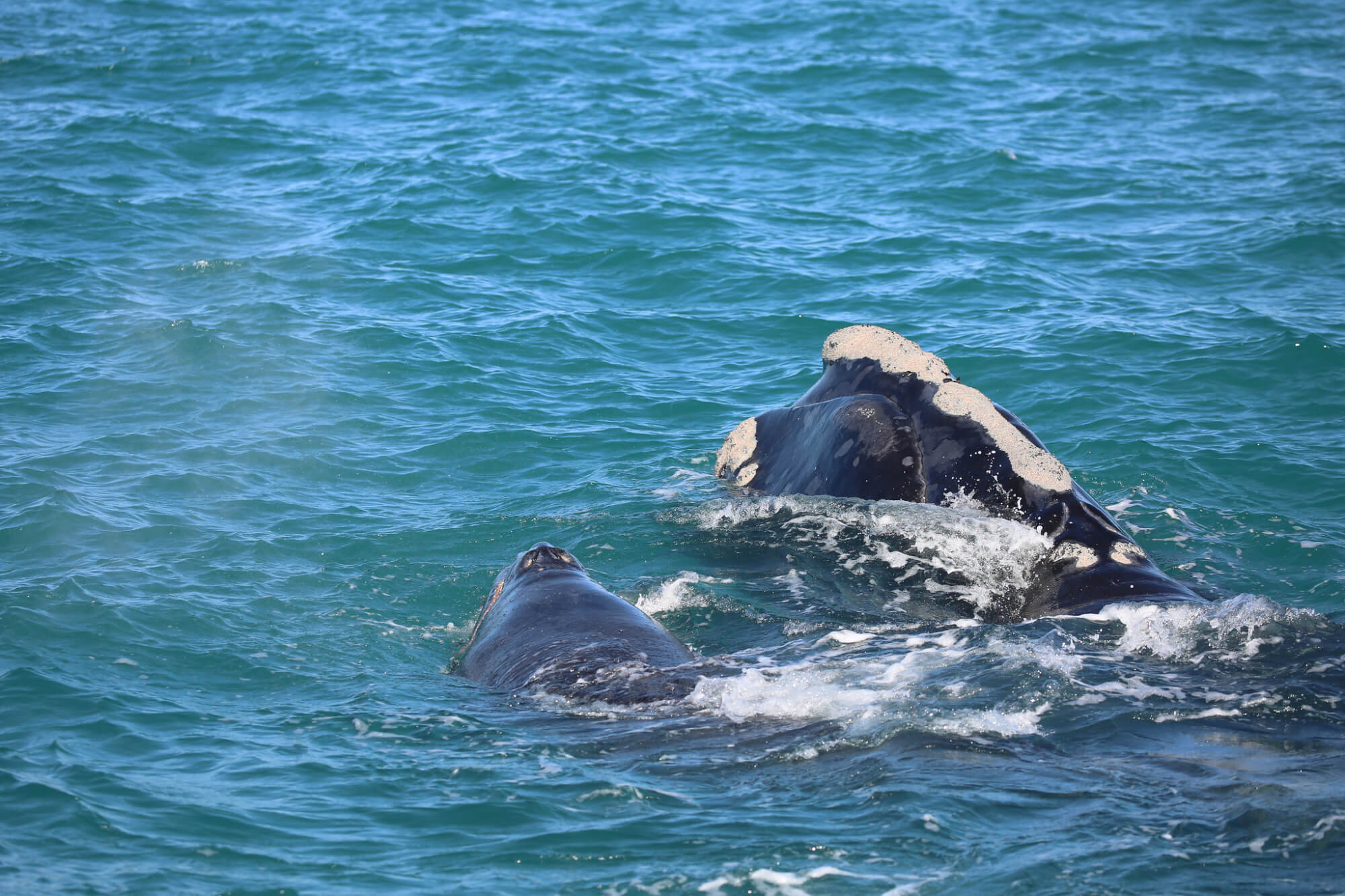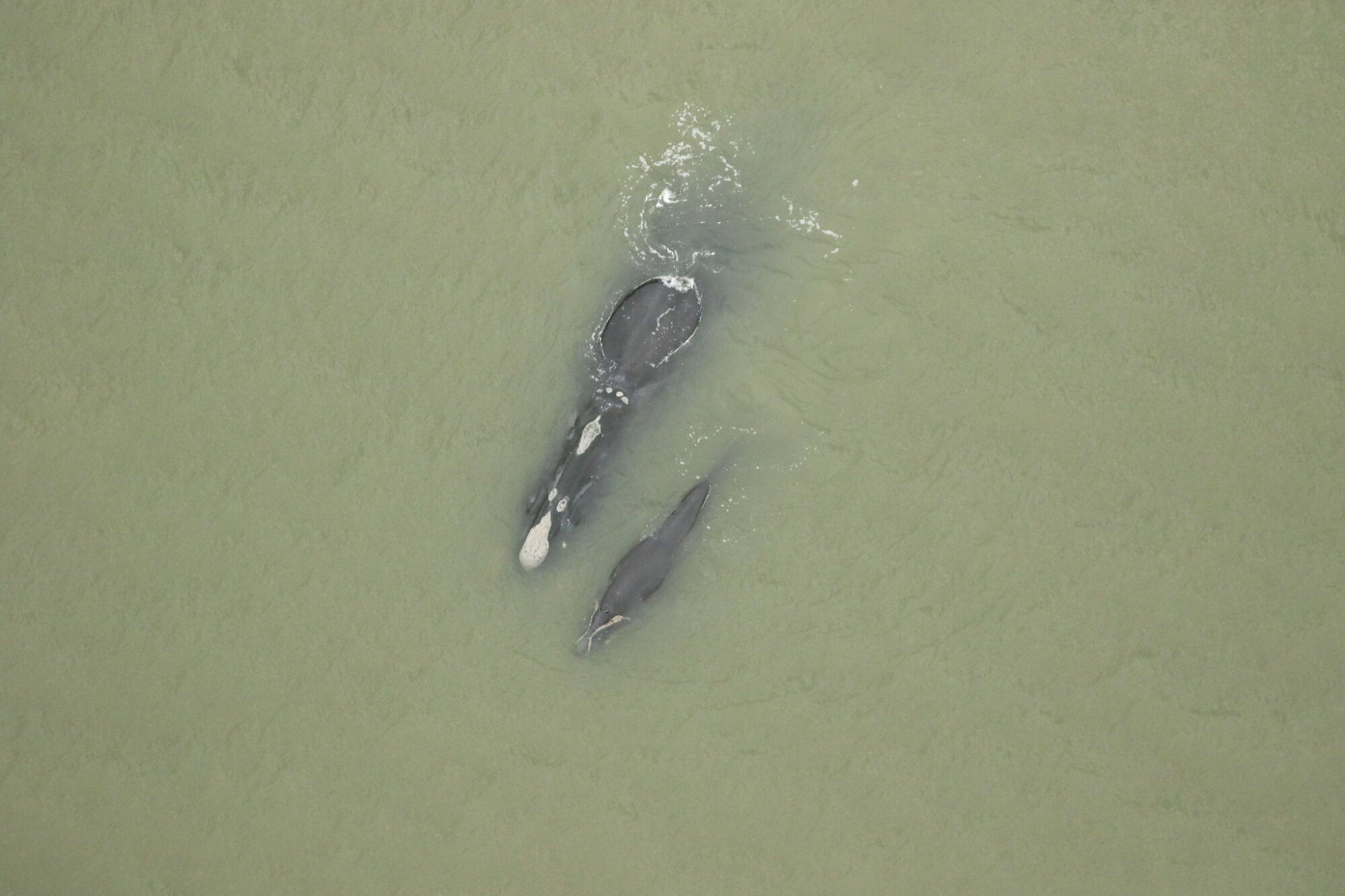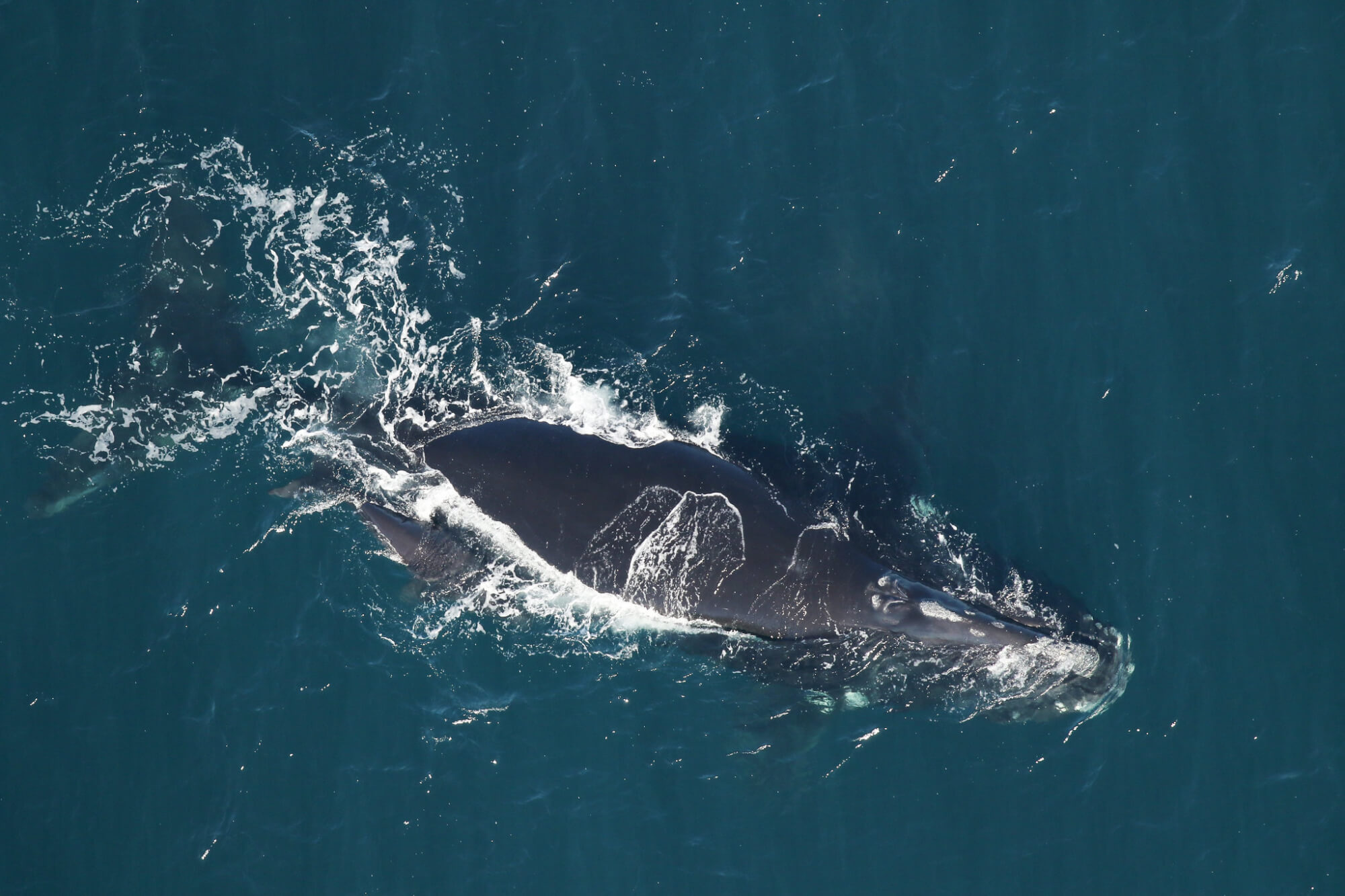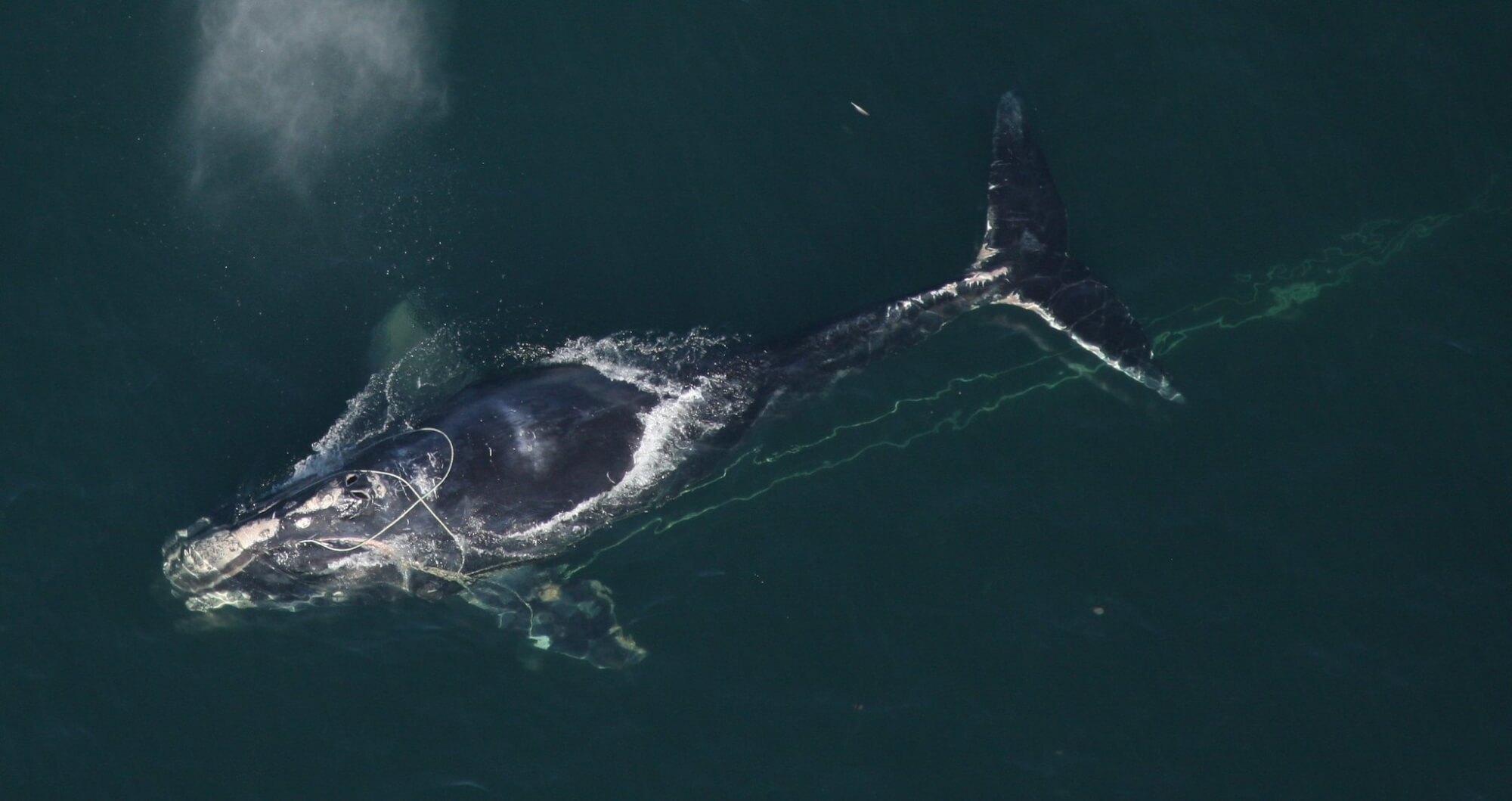* As of January 29, 2024, the total number of calves born was 16.
An exceptional event was observed a little over a year ago: Pilgrim, a North Atlantic right whale, gave birth to her first calf at the age of 10. This is exceptional, because although sexual maturity in this species is normally reached between 5 and 10 years of age, females are now having their first calf later and later. The culprit? Entanglements, ship strikes and climate change are stressors that are directly affecting the reproductive success of this endangered species.
Furthermore, with just 14 births recorded so far for the 2023-2024 season, we’re still a far cry from the target threshold to have any hope for population growth, which is 50 births per year.
Calving season closely followed
The New England Aquarium maintains an annual record of mother-calf pairs observed in the Atlantic during the calving season, which generally runs from December to March. This season, 14 pairs have been recorded so far by scientists, which, though encouraging, is far from sufficient.
For a season to be considered productive, more than 20 mother-calf pairs would be necessary. However, as the number of deaths currently exceeds the number of births, more than 50 newborns would have to be recorded every year for the population to increase. These data were reported by the National Oceanic and Atmospheric Administration (NOAA), which notably records incidents involving right whales and works in collaboration with the New England Aquarium.
According to the latest estimate from the North Atlantic Right Whale Consortium, the species currently numbers 356 individuals, including just 70 females of breeding age. Additionally, the interval between births having increased from 3 years to between 6 and 10 years, combined with the fact that females are having their first calf later and later, the objective of 50 births per year will not be easy to achieve. What’s more, of the 14 calves identified this 2023-2024 season, two have already died and the survival of a third is currently at risk.
Nightmares in the Atlantic
The last few weeks have been punctuated by several unfortunate events in North American waters. In early January, Juno’s calf (#1612) was seen with major lesions and injuries to its head and mouth caused by a run-in with a boat. The young right whale has not been seen since January 11.
Also in early January, female #3780 was seen without her calf, which scientists presumed to have died. Indeed, this early separation is hardly reassuring considering that the young animal was born in late December 2023 and that calves remain with their mother for nursing for around 6 or 7 months, and sometimes even up to a year and a half.
A few weeks ago, Half Note (#1301) was accompanied by an emaciated calf. This physical condition eventually got the best of the young animal, as its mother was recently seen swimming alone. This means that seven of Half Note’s eight calves have disappeared shortly after birth and were worryingly thin when observed at the calving sites. Scientists hypothesize that this 41-year-old female may have difficulty producing milk.
Milk production: a challenge for survival
High in fat content, whale milk allows calves to grow quickly… and survive their first months in the water! However, between entanglements and recurrent injuries, female North Atlantic right whales are finding it increasingly difficult to adequately maintain their physical fitness, which can affect their milk production. Channelling their energy into healing their wounds and continuing their activities even when entangled, females have less energy to bring a calf to term. This could also explain why the interval between births has increased. Right whales are also reportedly becoming smaller and smaller due to entanglements and collisions, making milk production more difficult and energy intensive.
In Canada, a number of regulatory speed limits and approach distances are being put into place to lower the risk of collisions and entanglements. Additionally, some fishing areas are closed when the presence of right whales is reported. Testing of whale-friendly fishing gear has also begun in a number of places across the country.
However, much remains to be done so that these resilient whales can one day swim freely and healthily with calves at their side.










